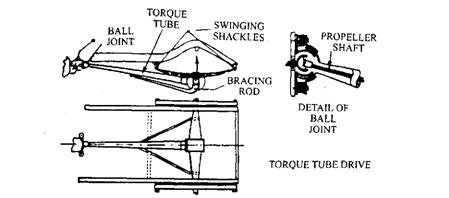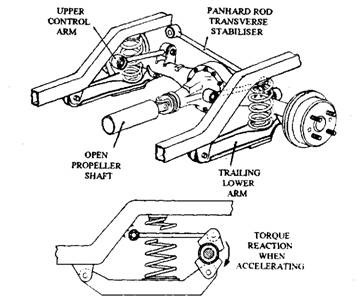de-Dion Drive

de-Dion Drive The de-Dion axle is often considered as the halfway stage between the normal axle and independent suspension. This layout provides many of the advantages of the independent suspension, but the system is not classed as independent, as the rear wheels are still linked by an axle tube. In the basic arrangement illustrated in Fig. 26.33, laminated springs are mounted on the frame by a 'fixed' pivot at the front and a swinging shackle at the rear. To support the wheel on a stub axle shaft, each spring is equipped with a hub mounting, which is rigidly connected to a tubular axle beam. The final-drive unit, which is bolted to a cross-member of the frame, transfers the drive to road wheels through two universally jointed shafts. The main propeller shaft is fitted with a universal joint at each end to allow for flexing of the Fig. 26.33. de-Dion drive. frame. In this design, the torque reaction of the final-drive casing is absorbed by the frame, and the driving thrust is


